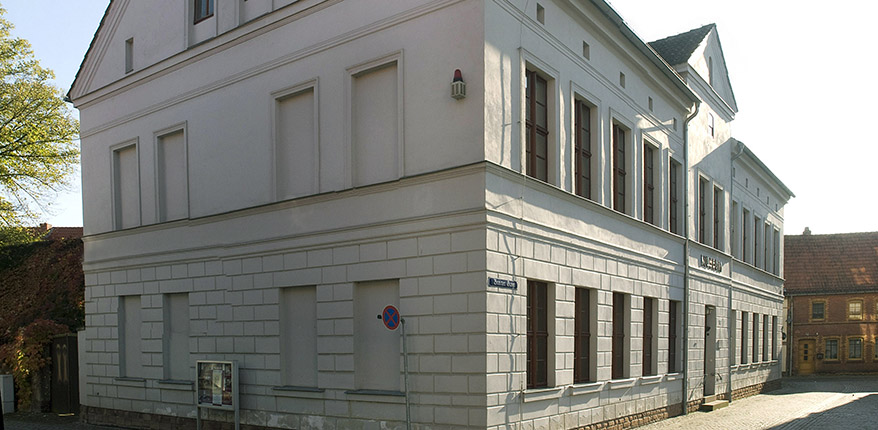
© Landkreis Börde
Museum Haldensleben
Museum Haldensleben
Founded in 1910, the Haldensleben Museum is a regional museum focusing on the cultural history of the Haldensleben region and the cultural history of the Biedermeier period. Therefore, on the one hand archaeological finds and the Riding Roland and on the other hand hand handicraft ceramics and furniture are the focus of the exhibitions. In addition, two half-timbered houses belonging to the museum form a small open-air museum of Biedermeier town life with a chicken yard and a flower garden.
A partial estate of the Brothers Grimm even belongs to the European cultural heritage and is the focus of an exhibition with supra-regional significance. From the Haldensleben Museum there are numerous cross connections to the Ecomusée Haldensleben-Hundisburg.
The Haldensleben Museum...
- Is a regional museum of cultural history with a corresponding spectrum of collections and exhibitions. In addition, it preserves a piece of the European cultural heritage with a partial estate of the Brothers Grimm.
- Since its foundation in 1910, the museum has been housed in a neoclassical school building erected in 1866, which today, together with several half-timbered houses, forms a small open-air museum of Biedermeier town life in the historic town center of Haldensleben.
- Has two attractive outposts in the form of the Hundisburg School Museum, which has existed in a historic school building dating from 1705 since 1988, and the House of the Other Neighbors, built in 1822 as a synagogue.
- Is the nucleus and interface of the Ecomusée Haldensleben-Hundisburg. Under this name, the various museum institutions in and around Haldensleben have been striving for a joint public image since 2001.
- The museum is run by the Ohrekreis and is managed and supervised on a full-time basis. It receives voluntary support from the Aller-Ohre-Verein and other partners.
- With its extensive collections has primarily a preserving archival function and with its library is a center of regional history research. The annual journal, which has been published since 1960, has an explicit scientific claim.
- Fulfills its educational mission primarily with its exhibitions and thus contributes to the formation of regional identity. For teaching purposes, the pupils of the Ohrekreis are allowed to use the exhibitions free of charge.
- Is also a cultural tourist attraction and is one of the important soft location factors for the district town and the district.
- Has the old district of Haldensleben, i.e. the land between the Ohre and Aller rivers, as its traditional catchment area. The formation of the Ohrekreis Museum Association from the two district-owned regional museums in Haldensleben and Wolmirstedt has not changed this.